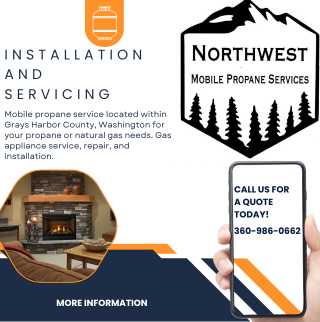The Coast Guard and Washington State Parks’ Boating Program encourage recreational boaters and paddlers to know the risks of accidental cold-water immersion. While air temperatures may be rising, water temperatures in Washington state waterways remain cold.
Always wear a life jacket while out on the water.
“Boaters who experience accidental cold-water immersion are threatened by multiple stages of risk, but many people only know about hypothermia,” said Rob Sendak, Boating Program manager. “Those who survive in cold water long enough to get hypothermia are lucky. A fall into cold water can drown a person within minutes due to cold-water shock.”

According to Frank Golden and Michael Tipton, internationally recognized experts in cold-water survival, water below 60 degrees Fahrenheit is immediately life-threatening — and many Washington waterways stay below 60 degrees Fahrenheit year round.
Sudden cold-water immersion makes it difficult, if not impossible, for boaters to keep their heads above water and stay afloat. Boating fatality statistics have shown that wearing a life jacket gives boaters the best chance of survival in the event of an accident, especially in cold water.
Advertisement
Advertisement
Small vessels such as kayaks, canoes, rafts and open motorboats less than 21-feet long are the most vulnerable to capsizing, but all boaters and paddlers should be prepared and follow these guidelines:
- Get educated. At a minimum, take a boating safety course to increase knowledge of emergency procedures and navigational rules. Learn more at https://www.parks.state.wa.us/442/Mandatory-Boater-Education&source=gmail&ust=1556721348456000&usg=AFQjCNGiiPYf3cEcIRq73JfgqcHmf0cuLw" style="color: rgb(17, 85, 204);">BoaterEd.org.
- Make sure everyone wears a life jacket, including experienced swimmers. State law requires all vessels, including kayaks, canoes and stand up paddle boards to have at least one properly fitted U.S. Coast Guard-approved life jacket for each person on board. And all children, age 12 and younger, are required to always wear a life jacket. Learn more athttps://parks.state.wa.us/981/WearItWA&source=gmail&ust=1556721348456000&usg=AFQjCNFKL9Hy9SJxm3G8adUUz4282gHy1w" style="color: rgb(17, 85, 204);"> WearItWashington.org.
- Be constantly alert for unexpected hazards. Avoid alcohol, marijuana and prescription drugs that decrease alertness. Learn more athttps://parks.state.wa.us/958/Designated-skipper&source=gmail&ust=1556721348456000&usg=AFQjCNHwyrAOP1nQVQDwKfNL2g8xkbRYkA" style="color: rgb(17, 85, 204);"> BoatSober.org.
- File a float plan with someone trusted. The plan should include details about the trip, launch area, marina, boat, passengers, towing or trailer vehicle, communication equipment and emergency contacts. Download a free float plan template athttp://floatplancentral.cgaux.org/&source=gmail&ust=1556721348456000&usg=AFQjCNEpbflEStBCs5Vxn-UPw2-mYwYcFw" style="color: rgb(17, 85, 204);"> FloatPlanCentral.org.
- Know the weather forecast and water conditions before setting out (warnings, winds, waves, tides, currents, etc.). Wind is a crucial factor as it contributes to capsizing and swamping. The National Weather Service offers online weather and river information useful for trip planning:
- https://www.weather.gov/sew/&source=gmail&ust=1556721348456000&usg=AFQjCNFwycOU0ACn1Z7lvwmD8wmvZ2BH3w" style="color: rgb(17, 85, 204);">www.weather.gov/Seattle
- https://www.weather.gov/otx/&source=gmail&ust=1556721348456000&usg=AFQjCNHBK-kkurt9S4-VGeTT3hPfnaBL7A" style="color: rgb(17, 85, 204);">www.weather.gov/Spokane
- https://www.weather.gov/pqr/&source=gmail&ust=1556721348456000&usg=AFQjCNEgugsgmcn-2EJALBrM_GUEDf6wPg" style="color: rgb(17, 85, 204);">www.weather.gov/Portland
- https://www.weather.gov/pdt/&source=gmail&ust=1556721348456000&usg=AFQjCNFltpMHcPzaK_KEBzBqOfy9cOjlbw" style="color: rgb(17, 85, 204);">www.weather.gov/Pendleton
- Dress properly for the air and water temperatures, always wear layers made of synthetic fabrics. Bring an extra set of clothes stored in a dry bag. Avoid cotton clothing. Consider a wet or dry suit when conditions are appropriate.
- Carry two forms of emergency communications equipment, preferably on your body, that will work while wet (whistle, VHF radio, person locator beacon, flares or waterproof cellphone).
- Don’t apply heat to extremities such as arms and legs of a rescued victim. This sudden change in temperature could cause cardiac arrest.
- Mitigate Risk by always posting a lookout, don’t drive motor vessels at high speeds and comply with all navigational rules.
For more information about cold-water immersion, visithttps://parks.state.wa.us/DocumentCenter/View/13899/Cold-Water-Immersion-Fact-Sheet-2019_State-Parks-Boating-Program-&source=gmail&ust=1556721348457000&usg=AFQjCNGNfNn8Qf6dudETZJ86GFKKZttKhg" style="color: rgb(17, 85, 204);"> https://bit.ly/2Gl9YqN
About the Washington State Boating Program
Washington State Parks administers the state’s Boating Program, which provides leadership in boating safety and environmental education and outreach. The goal of the program is to reduce accidents and fatalities, increase stewardship of Washington waterways, and keep recreational boating a safe, accessible and enjoyable pastime. For more information on the Boating Program, visit:https://parks.state.wa.us/435/Boating&source=gmail&ust=1556721348457000&usg=AFQjCNEWwl_0-Yc2APks_TLaunCXZq5Vow" style="color: rgb(17, 85, 204);"> www.washingtonstateparks.us/






